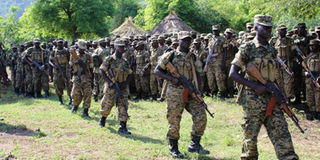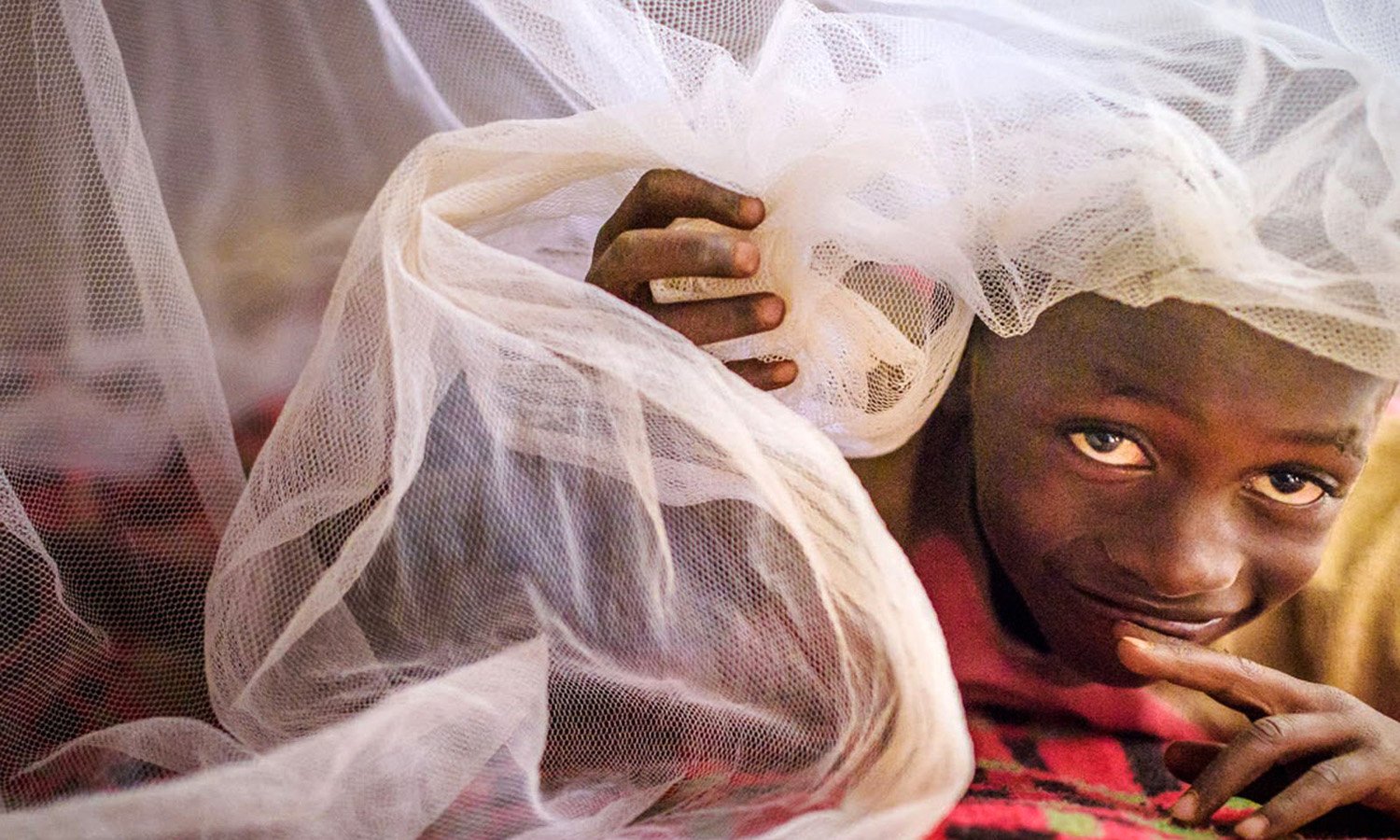Why ADF has outlived other rebels fighting Museveni’s government

UPDF camped in the Rwenzori region. The area has previously come under attack by the ADF rebels. PHOTO/ FILE
What you need to know:
- The rebel outfit has over the last 26 years killed more than 1,000 people, including an estimated 80 who were burnt to death in June 1998 when they attacked Kichwamba Technical College in Kabarole, and displaced close to 200,000 people.
The now DR Congo-based Allied Democratic Forces (ADF) rebel have been back in the news since gunmen waylaid and wounded Works minister, Gen Edward Katumba Wamala, in Kisaasi, a Kampala suburb.
Gen Katumba’s daughter Brenda Nantongo and his driver Haruna Kayondo were killed in the attack that has since been blamed on the ADF rebels.
Previous high profile killings including that of Maj Muhammad Kiggundu in Masanafu, Kampala, on November 26, 2016; former police spokesperson Andrew Felix Kaweesi in Kulumbiro, on the outskirts of Kampala, on March 17, 2017; Assistant Director of Public Prosecution Joan Kagezi, and those of at least seven Muslim clerics have all been blamed on the ADF.
President Museveni has on many occasions boasted that ADF and the Lords’ Resistance Army (LRA) have been defeated. He repeated that claim earlier this month at Kololo Independence Grounds where he presided over the swearing in of another batch of members of his 83-man Cabinet.
He said the government had defeated what he described as “rural terrorists like the Kony rebels in northern Uganda and the ADF in the Rwenzori”.
Mr Museveni said the ADF rebels who are trying to infiltrate the country again shall be defeated. “Thinking you can kill our people and continue and survive, you are deceiving yourself, and you will die,” Mr Museveni vowed.
Of course, Mr Museveni is right to go chest-thumping. His government has quite a track record when it comes to dealing with insurgencies. He has either negotiated or fought off those groups, but it has mostly been by military might that he has ended those rebellions across the country.
Those that he has negotiated with include Uganda National Rescue Front (UNRF I) and UNRF II, Uganda Peoples Democratic Movement (UPDM) and West Nile Bank Front (WNBF).
Those who he has fought and defeated include Alice Lakwena’s Holy Spirit Movement (HSM), Force Obote Back Again (FOBA), Peter Otai’s Uganda People’s Army (UPA) and the Lord’s Resistance Army (LRA). In light of that, Mr Museveni is right to boast that that he has defeated all the terrorists.
ADF, a merger between the Uganda Muslim Freedom Fighters (UMFF) and Amon Bazira’s National Army for Liberation of Uganda (NALU), which came into existence in 1995, is proving to be a different kind of adversary all together.
The rebel outfit has over the last 26 years of its existence killed more than 1,000 people, including an estimated 80 who were burnt to death in June 1998 when they attacked Kichwamba Technical College in Kabarole; abducted about 200 students from Mitandi Seventh Day Adventist College, Kichwamba Technical College and another school in Hoima; displaced close to 200,000 people; and thrown explosive devices at various locations in Jinja and Kampala.
Over those years, it has survived major military offensives including the February 25, 1995 UPDF attack on its camp in Buseruka, which left 93 rebels dead and hundreds more injured. That particular attack forced the leadership and whatever had remained of the rebel force to flee into the DR Congo. In 1998 after it regrouped and returned to Kasese, the army under the command of Gen James Kazini fought them out of the area and the Rwenzori Mountains, which left it weakened.
Following the arrest in Tanzania in March 2015 and repatriation to Uganda in July of the same year of its leader and commander, Jamil Mukulu, it had been expected that the organisation had with his arrest been plunged into a leadership crisis that could have left it radarless, but if the attempt on Gen Katumba’s life is anything to go by, the rebel outfit is very much still on its feet. Why will it not be defeated like others before?
Size
Lt Hannington Basakana, a former Bush War combatant who ran leadership and political education courses for fighting units of the NRA’s 151 brigade, which fought the UPA in Teso and served as an the Internal Security Organisation (ISO) officer before retiring into politics, says it is not about the size of the force. “It may seem not to be a big group like they are discovering now, but you can see how they have been touching Uganda where it hurts,” Lt Basakana argues.
Indoctrination
Mr Freddie David Egesa, a private investigator and security analyst with FDE Consult, argues that the ADF’s biggest strength has been its grounding in religion.
“The line of recruitment starts around religion. If you are using the Holy book, whether it is the Bible or the Quran, so many people will be captivated and indoctrinated. So many of these people are convinced that they are fighting a holy war,” he argues.
Lt Basakana agrees with Mr Egesa, adding that ADF’s resilience is rooted in religion. He thinks that it is only borrowing a leaf from similar faith-based organisations such as the Islamic State (ISIS), Boko Haram and Al-Shabaab.
“Once people are thoroughly indoctrinated they don’t give up easily. To them there is no borderline between what we define as success and defeat. It remains a victory whether you come out of the war dead or alive,” Lt Basakana says.
Government’s handling
During Maj Kiggundu’s November 2016 funeral, it emerged that Gen Katumba, the former Chief of Defence Forces, had been the brain behind the army’s decision to integrate former ADF rebels like Maj Kiggundu into the UPDF.
Sources close to the military indicate that the integration process would in some cases come with goodies such as rank, cars and cash, but these were never enough to go around to all former rebels, which left some of the former fighters disgruntled.
Mr Egesa says this induced some of the former fighters to return to the rebel rank. “The commanders received some rewards. The question now was who got the rewards. And you know once you have been recruited into rebel rank, you pick up a culture of violence and fighting. It becomes easy to regroup whenever the opportunity avails itself,” he says.
The Congo connection
In his 2018 New Year’s address, President Museveni indicated that the army had carried out air and artillery attack on ADF rebels in the North Kivu region, but needed DR Congo to give the UPDF a nod to enter its territory and attack them there.
The ADF is not the only rebel force to have had bases on foreign territory. FOBA had bases in parts of western Kenya just like the LRA had bases in South Sudan, but the latter were both defeated. What then is it about ADF and it bases in the Congo that makes it so difficult for the UPDF to crush it?
The paper, ‘Rebels without Borders in the Rwenzori Borderland? A Biography of the Allied Democratic Forces,’ which was authored by Kristof Titeca and Koen Vlassenroot, argues that one of the rebel outfit’s strength has been the fact that it has continued to display what was described as a transnational character.
The two argue that it is a scenario “where actors, resources, and events span national boundaries”.
“The ADF has become gradually embedded in its host society… an increasing number of its members have been locally recruited, a certain degree of collaboration with the Congolese population has been realised, contacts with local authorities have been established and the rebel group has become deeply involved in the local economy and informal trans-border trade,” they say.
Links to ISIS, Al Qaeda
There is, however, a school of thought that argues that ADF’s biggest strength now is derived from its links to international terror organisations such as the Islamic State.
Lt Basakana argues that those connections had enabled the rebel outfit learn how to fight on the long haul.
But is there and end in sight? Lt Basakana says there just might be one if Uganda addresses other governance issues around democracy, inequality and exclusion, which fuel rebellions of a nature such as the ADF’s.
Mukulu Arrest
Following the arrest in Tanzania in March 2015 and repatriation to Uganda in July of the same year of its leader and commander, Jamil Mukulu, it had been expected that the organisation had with his arrest been plunged into a leadership crisis that could have left it radarless, but if the attempt on Gen Katumba’s life is anything to go by, the rebel outfit is very much still on its feet




